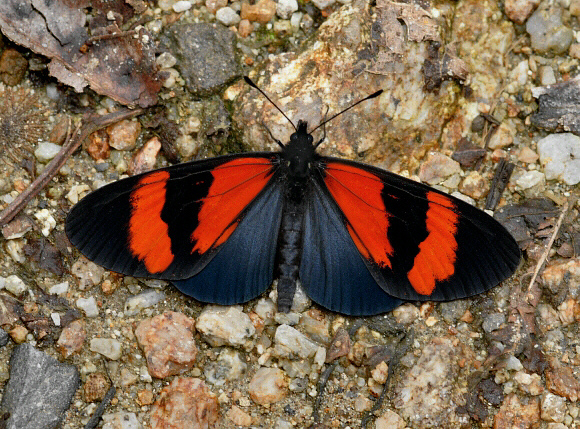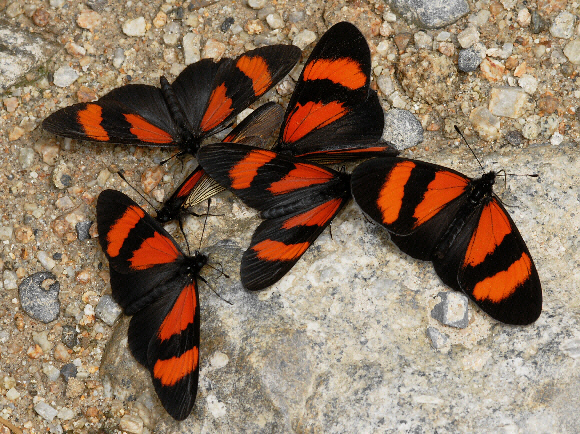
Introduction
The tribe Acraeini is primarily African – there are for example 83 species in Kenya, and about 230 in the whole African continent. There are also a few species in Asia, and an estimated 55 in the whole of the neotropical region.
In the neotropics the tribe is represented by 3 genera, most members of which have a pattern of red or orange-yellow bands on the forewings. The genus Actinote comprises of thinly scaled species whose wings have a translucent and shiny appearance. The other 2 genera Abananote and Altinote, are heavily scaled and boldly marked.
Altinote have velvety black wings, banded with bright red, orange or yellow. They are toxic models which form part of a complex Batesian / Mullerian mimicry ring involving Heliconius, Gnathotriche, Eresia, Castalia and various Ithomiine genera. Altinote characteristics which in combination make it possible to distinguish them from other genera include short straight antennae with flattened clubs, and closed cells on the hindwings. The latter can most easily be seen from the underside.
Altinote dicaeus is probably the commonest and most well known species, found in Peru, Bolivia, Ecuador, Venezuela and Colombia.

Habitats
This species occurs in disturbed cloudforest habitats at altitudes between about 1200-1800m. Colonies are localised, and tend to be found in open sunlit situations, usually along roadsides, or close to farmland.
Lifecycle
I have no information specific to dicaeus. The following generalisations are applicable to the genus Altinote: The eggs are yellowish and barrel-shaped. They are laid in batches of between 50-100 on the foodplants which according to species include Eupatorium, Vernonia, Mikania (Asteraceae) and Boehmeria, Mikania (Urticaceae). The caterpillars are typically dull greenish or brownish in colour. They are adorned on the back and sides with rows of short branched blackish spikes which in some species have mildly urticating properties. They live gregariously until the final instar. The pupae are whitish or pale yellow, marked with black spots or lines on the wing-pads and short black spikes on the abdomen. They are suspended from stems or foliage.

Adult behaviour
The butterflies are most abundant in the rainy season, when they can be seen in groups of up to a dozen, visiting flowers, or flying in the morning sunshine.
The bold patterns, bright colours and slow fluttering flight of these butterflies suggests that they are “advertising” their toxic properties to escape predation by birds.
Males commonly bask on unsurfaced roads, where they imbibe dissolved minerals from the damp ground. Once settled on the ground to feed they are exceedingly reluctant to move – so much so that I’ve often found aggregations of up to 20 that have been crushed by passing vehicles.
